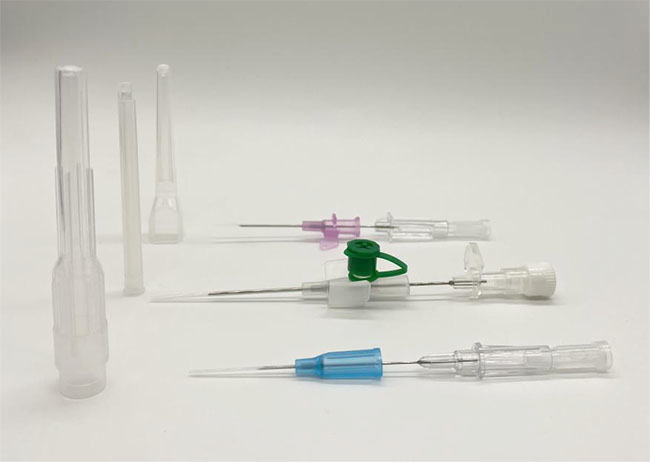IV catheters are a critical aspect of modern medical procedures, aiding in the administration of medications and fluids directly into the bloodstream. This article delves into the importance and proper usage of IV catheters, highlighting their role in providing reliable vein access and delivering essential therapies. With a focus on patient safety and optimal outcomes, healthcare professionals can gain valuable insights into the benefits and care guidelines associated with IV catheters.

IV Cannula is placed inside a vein to provide venous access, in order to reinfuse next time after one infusion. Venous access allows sampling of blood, as well as administration of fluids, medications. With soft cannula, intravenous indwelling Needle is operated easily, it can generally indwell for 3 days, reduce the patients’ suffering due to penetrating repeatedly, protect blood vessel and reduce the probability of phlebitis.
Ⅰ. Integrated enclosed design to prevent cross-infection of blood effectively;
Ⅱ. Color-coded easing cap allows for easier identification of cannula size;
Ⅲ. Advanced tip design, with double-bevelling to ensure easy vein puncture with minimum trauma;
Ⅳ. Kink resistant and specially tapered catheter;
Ⅴ. Transparent flash back chamber for easy visualization of blood to confirm venipuncture.

| Ref No. | Style | Size |
| IVC-P** | Pen type | ** represents the specific Needle size ranges from 14G to 26G |
| IVC-I** | Injection type | |
| IVC-B** | Butterfly type |

IV catheters play a vital role in a wide range of medical procedures, facilitating the efficient delivery of medications and fluids directly into the bloodstream. These catheters provide a reliable and convenient method for accessing veins, ensuring optimal patient care and treatment outcomes.
One of the key benefits of IV catheters is their ability to provide immediate access to the circulatory system. In emergency situations where rapid administration of life-saving medications or fluids is crucial, IV catheters offer a direct route, bypassing the digestive system. This allows for faster action and absorption, ensuring timely delivery of essential therapies.
Moreover, IV catheters are available in various sizes, allowing healthcare professionals to select the appropriate catheter gauge for each patient. Choosing the correct IV catheter size is essential to prevent complications such as occlusion or infiltration. Proper catheter size selection ensures efficient flow rates, minimizing the risk of tissue damage or discomfort for the patient.
Careful attention to the maintenance and care of IV catheters is crucial to prevent infection and complications. Healthcare providers must adhere to strict sterile techniques during insertion and utilize securement devices to prevent dislodgement. Regular site inspection, timely dressing changes, and proper flushing protocols are essential to minimize the risk of catheter-related bloodstream infections.
Furthermore, patient education plays a crucial role in preventing catheter-related complications. Educating patients on signs and symptoms of infection, as well as proper hygiene and care protocols, empowers them to take an active role in their own healthcare. By ensuring proper understanding and adherence to care guidelines, the risk of complications and the need for catheter replacement can be significantly reduced.
In conclusion, IV catheters are indispensable in modern medical procedures, providing reliable and swift access to veins for the administration of medications and fluids. Their ability to deliver therapies directly into the bloodstream improves treatment efficiency and outcomes. By following stringent care guidelines and patient education, healthcare professionals can ensure optimal IV catheter usage, reducing the risk of complications and enhancing patient safety.


Contact: Neo
Phone: 008615867460640
E-mail: Info@Hwtai.com
Whatsapp:008615867460640
Add: Building 2, Xinmao Qilu Science Technology Industrial Park, Tianqiao District, Jinan City, Shandong Province,China.
We chat
